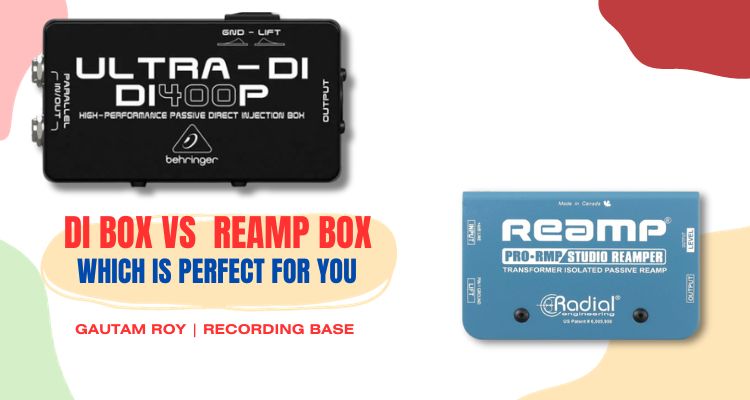The market is full of studio monitors and choosing one which suits your needs and budget is really a tough job. That’s why we came up with a list of Top 11 Best studio monitors under 1000 dollars.
So that you can compare them and choose the one which could take your recording and mixing quality to a new level.
We deeply analyzed a huge number of studio monitors under $1000 available out there and finalized these charms for our top 11 list.
Obviously, they have added benefits for recording and mixing but every monitor listed here is different.
Read also,
- 3 Easy Tips For Better Trap Beats in 2024 [Must Read]
- Top 10 Studio Monitors Cables And Buying Guide
Few of them are built for high-quality recording sessions while others are great for mixing. Few can adopt any environment while others need a large sound-treated control room.
So which monitor should you choose? At the end of this article, you will be able to decide…
Let’s jump into the list…
Disclosure: This post may contain affiliate links, which means we may receive a commission if you click a link and purchase something that we recommended. Read more about Affiliate disclosure here.
Table of Contents
- 1 Best Studio Monitors Under $1000
- 2 1. Yamaha HS8 (Pair) – Yamaha’s Legendary Product
- 3 2. Presonus R80 AMT Pair
- 4 3. Presonus Eris E8 Pair
- 5 4. Neumann KH 120 A – Single
- 6 5. Mackie HR624 (Pair)
- 7 6. Kali Audio IN-8 V2 8-inch (Pair)
- 8 7. KRK Rokit 10-3 G4 (Pair)
- 9 8. JBL 308P MkII (Pair)
- 10 9. Genelec 8010A Bi-Amplified Monitor
- 11 10. Adam Audio A7X (Single)
- 12 11. Fluid Audio FPX7
- 13 At The End
- 14 FAQs about Studio Monitors Under 1000
Best Studio Monitors Under $1000
Honestly, I would like to tell you that there is no best studio monitor pair under $1000 which I can recommend to you. When it comes to choosing a studio monitor, it really depends on your needs and your studio environment. This guide will help you to pick your’s best.
A monitor which may suit one recordist might not suit another.
There are some factors that influence your decision on purchasing a studio monitor. These factors are,
- Driver Size
- Wattage
- Near-field or Far-field
- Frequency response
- Environment
Well, these are some factors that can confuse you to making a decision to purchase the best monitor pair. We have researched all the monitors available on the market and came up with these 11 best studio monitors under 1000 bucks.
This list will help you to choose the best pair of studio monitors for under $1000. I highly recommend you to read our How To Choose Studio Monitors before making a purchase.
Well, Without vesting time let’s dive into our top 11 list of best studio monitors under 1000 dollars.
1. Yamaha HS8 (Pair) – Yamaha’s Legendary Product
Our first studio monitor in the top 11 list comes from the biggest music equipment manufacturer on the earth – Yamaha.
I don’t think so if you are related to the music field and not aware of this giant music equipment and instruments manufacturer.
Over the past several years HS8 is the most sold mid-range studio monitor under $1000.
No doubt why this monitor grabbed the 1st position in our list of best studio monitors under 1000 bucks.
Is it enough to convince you of this monitor?
Well, let’s get into the business now.
There are 5 main factors that are to be considered before buying any monitor. Let us appraise this studio monitor on these factors.
Driver
Do you know, an 8″ driver is considered the ideal driver size of a speaker? An 8-inch driver is the most used driver size by consumer speaker manufacturers around the world.
Yamaha HS8 has featured 8″ drivers which provide an amazingly close feeling of listening in a general stereo system while producing a highly refined sound quality for mixing.
The 1″ highly efficient silk dome twitter delivers superb quality high-resolution sound. The thick waveguide technology is used as the vibration minimizer in the tweeter. As a result, you will get a smooth distortion-free high end.
Wattage
Equipped with a powerful 120 Watt two-way separate dedicated amp for both the woofer and the tweeter, Yamaha HS8 makes it possible to deliver you the distortion-free accurate sound even in high volume.
Its precisely engineered amp gives you a nearly flat frequency response and makes your mix a masterpiece.
Frequency response
As a recordist, you already know the importance of frequency response in mixing. But for the convenience of new players, here is a quick definition of frequency response.
Frequency response is the intensity curve of sound frequency delivered by the monitor. A flat curve is an ideal frequency response. Practically, as flat as the frequency response curve as an accurate mix you can achieve.
Well, apart from the other folks, Yamaha HS8 delivers a nearly flat frequency response curve which will take your mixing to the next level. The legend provides 38Hz to 30kHz frequency response.
The result is straight – A tight bass as low as 38kHz to untouched and clear high end up to 30kHz. 2kHz crossover provides a clear and flat mid-range extra helpful to mix vocals.
Environment
Ok, I know you have a decently treated control room. No?
Well, this is the only demerit of purchasing an 8″ high wattage studio monitor. Yamaha HS8 has an 8″ woofer that draws the power from the 120W dedicated amp. Do you think so that a home studio with 10’X8′ control room will afford it?
You need at least a semi-sound treated 12’X14′ sized control room to handle this monitor. Or you can go for Yamaha HS5 which is specially built for small size rooms.
Yamaha HS8 is a nearfield monitor. Near-field monitors are generally used for mixing. HS8 works well when placed 2-4 feet distance. After this distance, the sound starts to scatter and you lose accuracy.
Pros
- Big 8″ woofer and high wattage amp delivers great sound
- Tight bass with clear mid and high frequency
- Good frequency response with nearly flat frequency curve
- Solid construction lasts long
- Price is very competitive
Cons
- Not ideal for small room size
- Bass slightly interferes with mid-range
- Not for newbie recordists
2. Presonus R80 AMT Pair
There is a good reason why it got the 2nd place in my list – You get this monitor pair with Ribbon Tweeters for under 1000 bucks.
If you head over to the other brands which provide ribbon tweeters, you will get only a single piece in this price range. Here one question would be arising in your mind.
What is a ribbon tweeter?
Ribbon tweeters use the same mechanics as ribbon mics. The driver of Ribbon tweeters is often made out of a deposition of aluminum vapor which is multiple times thinner than dome tweeter drivers. This incredibly light, and extremely flexible driver is suspended in an electromagnetic field.
The ultra-thin driver makes ribbon tweeters respond to the subtlest of wave formations. Which makes them incredibly responsive, dynamic, and detailed.
Obviously, these tweeters are much more expensive than dome tweeters. And, here is the deal with Presonus R80. You get Presonus R80 pair featured with Ribbon tweeters under $1000.
There are a few more advantages to getting this studio monitor which makes you fall in love with it.
So, let’s measure the quality of this monitor with my 5 point analysis.
Driver
Presonus R80 features an 8″ Kevlar woofer and Ribbon tweeters. The combination of these two high-performing technologies makes it able to deliver crystal clear sound.
As I have told above, Ribbon tweeters are very thin aluminum vapor diaphragms suspended in an electromagnetic field that makes them respond with the subtlest part of frequencies.
Due to this 6.8 inch Air Motion Transformer(AMT) tweeter technology, you will receive the extra clear sound quality. This feature makes this Presonus R80 ideal for mixing.
Additionally, the 8″ woofer made of Kevlar cone adds the bass as low as 40 Hz.
Wattage
Presonus R80 features a 150 Watt 2-way built-in amp for each piece. This 2-way amp is specially designed to supply accurate power to the woofer and AMT. The power distribution to the woofer and tweeter is 100W and 50W respectively.
It’s a class D power amplifier equipped with a switching power supply, output current limiting, RF interference, over-temperature, subsonic filter protection, and turn-on/off transient.
You get energy conservation mode which lowers down power to <0.5W while in standby mode.
Near-field or Far-field
This studio monitor is fully near-field and features acoustic Space settings (Linear, -1.5 dB, -3 dB, -6 dB) to compensate for room placement.
This is very helpful when your control room is not much sound treated.
As you know, nearfield monitors are ideal for sound mixing, this monitor would be a good option if you want a monitor for mixing purposes.
Remember, it has a Ribbon AMT tweeter which is an added benefit to owning this monitor for mixing purposes.
Frequency response
You will get a nearly flat Frequency Response from 40 Hz to 22 kHz. It is not as much as Yamaha HS8 delivers but enough for a good mix.
40Hz is a very low frequency and easily tackles bass guitars and kick drums. As well as the high frequency covers the range above human audible range which is awesome.
The nearly flat frequency curve makes it an ideal monitor for mixing.
If you are an experienced mixing engineer then you would be aware of the fact that balancing human vocals are the toughest part of the mixing session.
Presonus R80 delivers a crossover frequency at 2.6 kHz.
The frequency where the human vocal resides. You get a very Optimus midrange and as a result, you can mix vocals more accurately.
Environment
Though this monitor has an 8″ woofer and 150 Watt amp it fits well in big-size control rooms. But don’t be disappointed.
You can use it with mid-size rooms by adjusting the acoustic Space settings (Linear, -1.5 dB, -3 dB, -6 dB) located behind the monitor.
If you are searching for a monitor for mixing, this is a good option for you.
Pros
- 6.8″ Ribbon tweeter AMT responds to the subtlest frequency
- Compact size
- Good frequency response with nearly flat frequency curve
- Detailed, high-end frequency
- Wide stereo imaging
- Room placement adjustment knobs
- Price is very competitive
Cons
- Not ideal for small room size (ideal for medium and big size rooms)
- Not for newbie recordists
3. Presonus Eris E8 Pair
Well, above I have introduced you to a Ribbon tweeter monitor pair by Presonus, here I am going to introduce a standard tweeter model from the same manufacturer.
PreSonus Eris E8 is a very popular monitor among home recordists.
This low-priced compact studio monitor delivers perfect sound around its frequency range and is ideal for small size rooms. The only condition is your room should be nicely acoustic treated.
Without acoustic treatment, you could face reflections that interfere with your mixing and monitoring. So make sure your room is well treated before purchasing.
Here is the 5 point analysis of this monitor.
Driver
In Presonus Eris E8 you get a Kevlar cone 8″ woofer which delivers accurate bass frequencies as low as 35 Hz. As you can see it is 5Hz more than Presonus R80.
As usual you get more control over bass frequencies while mixing. It features a 1.25″ ultra-low-mass, silk-dome, high-frequency tweeter which is not as accurate as Ribbon counterpart but for home and mid-range studios, it is worth mixing.
Wattage
The 140W Class AB built-in amp makes it capable to deliver each and every sound frequency between its frequency response.
This 2-way responsive amp delivers separate 75W and 65W power to the woofer and tweeter respectively.
Its class AB amp provides lots of headroom reduces clipping and distortion and makes your mixes extraordinary.
Near-field or Far-field
PreSonus Eris E8 is a nearfield monitor and perfect for home and mid-range studios.
It has acoustic space adjusting switches on the backside which will help you to adjust the sound space according to your room size.
You also get low cut as well as mid and high adjustment knobs extra beneficial to adopt your room size and environment.
Frequency response
35Hz to 22Khz frequency response makes it ideal to mix very low range to all high human audible frequencies altogether. The frequency curve is flatter than the other same range monitor speakers.
The crossover frequency at around 2.2 kHz makes is a good vocal mixing monitor. You get decent voices due to this crossover frequency.
Environment
It is well fitted to all size rooms, especially small home studios.
That’s the reason why it’s quite popular among home recordists and musicians. Manufacturers claim that it is an ideal monitor for the small room size.
The room size adjustment switches, mid and high-frequency controls, low cut, and near-field are built to make it an ideal choice for home recording.
It adjusts itself with any environment from small not well sound-treated rooms to highly treated big rooms.
Overall this is ideal equipment if you have a home studio and searching for a monitor that can adjust your studio environment.
Pros
- Delivers Bass as low as 35Hz
- Compact size
- Front-firing bass port
- Good frequency response 35Hz-22Khz
- Acoustic adjustment
- Ideal for home recording
- Price is very competitive
Cons
- Some tweeter hissing sound captured by users
- Not ideal for Professional studios
4. Neumann KH 120 A – Single
Neumann KH 120A – This is one of my favorite studio monitors in this top 11 list. If you ask why then I will say because of the brand and the quality it delivers to its users. Neumann is a very reputable brand in manufacturing condenser mics and monitors.
I have Neumann condenser vocal microphones and every time I record the vocals in those mics It was amazing with respect to the clarity of sound.
Neumann KH 120A studio monitor delivers the same amazing quality of sound. Owning this monitor means a perfect recording and mixing session.
In one sentence – If you want to deliver professional-quality sound then you should own Neumann KH 120A studio monitors.
The only disadvantage of owning this monitor is the price. Only a single piece costs around $800. If you want to buy a pair then you have to spend around $1600.
Though you can buy the single monitor for reference, in combination with other monitors. And when you have some extra money in your pocket you can think of the second one.
Well, how much does it satisfy the user on the 5 point analysis?
Driver
Neumann KH 120A features a 5.25″ long-throw woofer fitted under a metal grill for extra protection.
This In-house modeled long-throw composite sandwich cone bass driver is built with Extremely Linear Force Factor ELFF technology which enables it to deliver the best quality low and lower midrange sound.
Linear piston motor helps it to give very low harmonic distortion even at the high excursions.
The 1-inch alloy fabric dome tweeters are built using the Latest modeling techniques which minimize non-linear distortion while providing accurate high frequencies.
Moreover, woofers and tweeters are magnetically shielded and which means if the monitor comes into the range of any magnetic field, the sound doesn’t get affected.
Wattage
Wattage is not as high as the above 3 monitors. The 50 Watt + 50 Watt bi-amplified amp is perfect for a 5.25″ woofer though.
As you have seen that the tweeter also receives the same power as the woofer, it’s clear that its tweeter is more powerful than others and capable to provide more accurate mid and high-frequency sound.
Though there is not much power for a large room it delivers superb sound staging and imaging in mid-size rooms.
A perfect studio monitor for extraordinary mixing.
Near-field or Far-field
It is a nearfield monitor and is perfect for small and mid-size rooms. On the backside, you will get 3 switches to adjust the low, mid, and high range according to your room size and environment.
The two-way front-facing bass reflex makes it more environment-friendly. Apart from the rear bass-reflex monitors, its sound does not affect the back environment. You won’t get many reflections from the rear walls.
As it is a near-field monitor, it is perfect for mixing purposes. You can take your projects to the next level with Neumann KH 120A.
Frequency response
Neumann KH 120A normally delivers the frequency response of 52Hz to 21Khz in ±3 dB and 46 Hz to 24 kHz in ±6 dB.
Due to the 52Hz low-frequency range, it slightly struggles to deliver perfect kickdrum bass. If we talk about the overall frequency range then it’s a perfect studio monitor.
High frequency is above human audible range so you get all the frequencies for a good quality mix.
The main magic is its frequency curve. Its frequency curve is flatter than many same range monitors. And you know how a flat frequency curve is important for a good mix.
The crossover frequency is around 2.0 kHz so you will get perfect vocal and mid-range frequencies which could help you out in mixing.
Environment
As it is a 5.25″ 100W monitor with bass, mid and treble adjustment buttons you can use it in your home studio without any worry.
If you want a high-end mid-size studio monitor that could adjust your environment then you definitely go for Neumann KH 120A.
Many professional studios own this studio monitor because of its capability to deliver the flatter frequency response.
Here are some pros and cons of Neumann KH120 A which you should know before purchasing.
Pros
- Neumann KH120 A delivers very accurate and detailed sound
- Compact size
- The front-firing bass reflex port
- Flatter frequency curve
- Acoustic adjustment buttons
- Ideal for home recording
- Excellent build quality (Aluminium body)
Cons
- Costly as compared to others in this list
- Only 1 XLR input
- Bass is slightly low (52Hz)
This studio monitor is a bit more costly(around $1500 to $1700/pair) than other monitors listed here but when you evaluate the price with the quality, the quality beats the price.
5. Mackie HR624 (Pair)
You probably know Mackie as a manufacturer of analog and digital mixers. But they also manufacture other pro audio items like studio monitors, audio interfaces, etc.
Mackie HR624 is a mid-size mid-price range monitor which costs you around $1000. This studio monitor provides us with all the necessary features required for good monitoring and mixing.
As well as it is adjustable to all environments as it has acoustic adjustment backside buttons.
The built-in damping feature gives us noise-free sound eliminates midrange artifacts, The passive radiator provides us tight and articulate bass extension down to 45Hz. This is quite low than Neumann KH120 A which is more costly than this monitor.
This monitor is THX pm3 certified for surround sound and is perfect for High-Definition audio, gaming, and cinema.
Let’s grind this studio monitor in our 5 point analysis grinder.
Driver
Mackie HR624 features a 6.7″ high-precision, low-distortion LF transducer which delivers precise low frequency down to 45 kHz. The 1″ titanium dome, ferrofluid-cooled tweeter provides very accurate mid and high frequencies up to 22kHz.
Mackie HR624 is built with a passive radiator feature that replaces the port found on other speaker systems. The advantage of a passive radiator is that at a higher sound pressure level-SPL it is capable to reproduce low frequencies with lower distortion than other simple ports or ducts.
Wattage
Featured with twin FR Series amps with 140-watt power – 100W for LF / 40W for HF – Mackie HR624 provides us a great sound up to 89 dB SPL Sensitivity. The amp features onboard active crossovers and time-correction circuitry, helping highs and lows reach ears at the same time.
Amp is also equipped with protection circuitry to protect from damaging input levels.
This monitor is designed with one-piece cast aluminum Zero-Edge-Baffle which minimizes diffraction and gives you a crystal clear image of your mix.
The front power button also works as the indicator for overload and signals you when the monitor gets overloaded.
Near-field or Far-field
This is a pure near-field monitor and a good choice for home or small recording studios. It has acoustic adjustment switches along with low cut, mid and high adjustment switches.
So you can use this monitor in the semi-soundproof room too. You can adjust it for any room size and environment.
Frequency response
The low-frequency transducer provides together from 45 Hz to 6 kHz frequency range and the high-frequency tweeter provides 1.6 kHz to 22 kHz.
You get sounds from 45Hz to up to 22Khz. The frequency curve is nearly flat ±3 dB which is very an added benefit for mixing.
The crossover frequency is around 3Khz which is slightly higher than other same range speakers. You get some extra boost at upper mid frequencies like female vocals.
Environment
as I have told above, this monitor speaker can be adjusted in any environment. It is equipped with an acoustic switch. Low cut, high and mid adjustment switches make it more comfortable in any environment.
Here are some pros and cons of Mackie HR624 which help you to make a decision about purchasing.
Pros
- Clear and powerful sound (140W amp)
- Compact size
- Passive radiator provides tight and articulate bass
- aluminum Zero-Edge-Baffle minimizes diffraction
- Acoustic adjustment buttons
- Ideal for home recording
Cons
- Expansive then other home studio monitors
- Slightly high Crossover frequency
Mackie Mackie HR624 is available at around $500 to $600 for a single piece. That means you have to put $1000 to $1200 to get the pair.
6. Kali Audio IN-8 V2 8-inch (Pair)
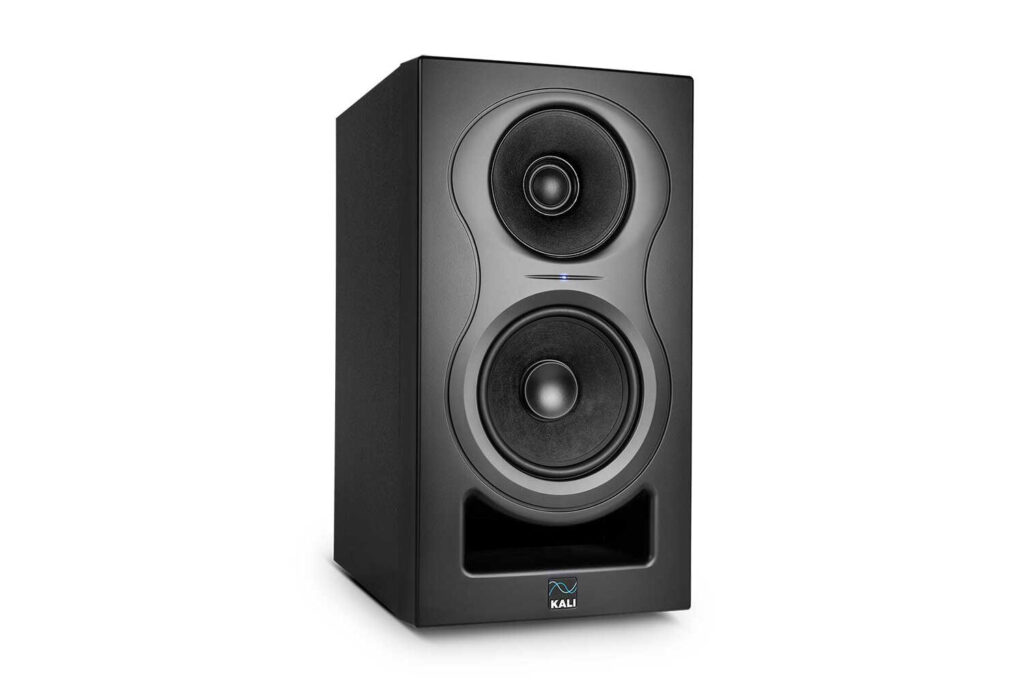
Kali Audio is an emerging brand in the audio recording space. It has a wide range of studio monitors along with subwoofers.
However Kali audio has some budget studio monitors, I have shared here the highest range model of Kali Audio ie; Kali Audio IN-8 V2 8-inch studio monitor.
It is a standard 8-inch near-field studio monitor that provides the sound best for mixing in home studios.
It has been heralded as one of the most accurate studio monitors in $1000 price range.
Let us compare it with others.
First off,
Driver
Kali Audio IN-8 V2 is a 3-way studio monitor which has one 8 inch low-frequency transducer, one 4-inch mid-range driver, and a 1-inch tweeter for high frequencies.
It has one coaxial 1-inch textile-dome tweeter along with a 4-inch optimized-profile poly-coated midrange driver. The combination of these two creates an interference pattern at the speaker’s crossover point.
Wattage
The low-frequency driver is 80 watts, the mid-range driver is 40 watts and the tweeter is 40 watts. All these drivers produce a total power of 160 watts.
All the drivers have separate amps so you will get the sound without distortion even in high volume.
Near-field or Far-field
Kali Audio IN-8 V2 is a near-field studio monitor ideal for home studios of small spaces. It has several acoustic arrangements presets that you can apply from the back panel knob.
There are a total of 8 acoustic arrangement presets compatible with all types of recording environments.
Frequency response
This studio monitor can deliver from 39 Hz to 25 kHz frequency response when operating within -10dB range.
It has two crossovers; LF to Mid-Range Crossover at 280 Hz and Mid-Range to HF Crossover at 2800 Hz.
The maximum SPL it delivers is which is quite a good SPL range for home studio monitors.
Environment
As I have told you above, It has an acoustic arrangement knob on the back panel. There are 8 types of acoustic arrangements that make it compatible with all types of recording environments.
Pros
- Outstanding audio quality
- Tri amped drivers deliver clear audio.
- There are two crossovers that make it a perfect studio monitor for mixing.
- A good amount of headroom available for mixing and mastering.
- Lower price then other competitors.
Cons
- Not ideal for small control rooms.
7. KRK Rokit 10-3 G4 (Pair)
KRK is my favorite brand to monitor speakers. It has a wide range of monitors to choose from but as we are discussing the top 11 list of best monitors under 1000 dollars, here I have added this 10″ KRK monitor.
KRK Rokit 10-3 G4 is really a big deal when you are thinking of purchasing a monitor for under $1000. There are a number of advantages to owning this monitor.
First of all, you get a three-way monitoring system equipped with a low-frequency transducer, a mid-range woofer, and a high-frequency tweeter which together allows it to produce very high quality and accurate sound.
The second advantage is you get a 10″ transducer which is a giant sound producer.
There is no other monitor that exists in the same range as these added benefits.
Let’s have a detailed look at this monitor with our 5-point analysis.
Driver
KRK Rokit 10-3 G3 features 1 low-frequency transducer, 1 mid-range speaker, and a tweeter for high frequencies.
The 10″ Low-frequency transducer is made of the glass-Aramid composite provides low frequencies down to 25Hz. The 4″ Aramid Glass Composite woofer provides an incredibly neutral midrange response along with 1″ soft-dome tweeter able to deliver high frequencies up to 30kHz.
This extraordinary combination of 3 tremendous drivers covers all the frequencies from 25Hz to 30kHz insuring to deliver every single frequency to your ear.
Wattage
As aspected from this 3-way monitor system, it has a 140W class A/B amplifier that delivers SPL up to 113dB. The power is distributed as 80W for low frequency, 30W for mid-frequency, and 30W for high frequency.
It features a Front-firing Bass Port which helps reduce boundary coupling. You can place it against a wall without worrying about any reflection.
The front baffle design reduces the diffraction and ensures the diffraction-free clear sound. Its proprietary waveguide technology optimizes it for superior sound imaging.
Near-field or Far-field
This seems to be the main question about this monitor and the answer probably creates confusion in your mind. Well, you should aware of the criteria which make a monitor near-field or far-field.
because of the 10″ transducers and 3-way speakers, it could be considered as far-field but on the other hand, the 140W amp makes it a near-field monitor.
In my opinion, it has the advantages of near-field and far-field together. It’s upon you how you treat it.
Frequency response
The frequency response of this monitor is more extended than other under 1000 dollars monitors. You get a wide frequency range from 25kHz up to 30kHz.
The low frequency is an added benefit when mixing kickdrum or scoring a movie.
The high frequency which is up to 30kHz is beyond the human audible range and definitely able to deliver every single sound frequency from your track.
You get a 3.5kHz crossover frequency which is higher than the ideal range which is 2.2 to 3kHz. Though you get very clear sound on higher mid items like female vocals and melodies.
The frequency curve is slightly high at the mid-frequency range which is obvious as it is equipped with a mid-range woofer too.
Environment
There is no acoustic adjustment switch so you can’t adjust this speaker with your room environment.
Though you get low, high-frequency adjustment knobs help you to adjust the sound according to your room environment and size. But they are not as much help.
The only advantage of this monitor for the environment is, it has a front-facing bass reflex so you can place it against the wall.
Pros
- 3-way low, mid and high frequency separate speakers.
- Clear and powerful sound (140W amp)
- 10″ transducer delivers bass down to 25kHz
- front-facing Bass-reflex
- Competitive Price
Cons
- No acoustic adjustment switch
- High Crossover frequency
- 21 Kg Weight which is very heavy to handle
You can get a single KRK Rokit 103 G4 monitor for $400 to $500.
8. JBL 308P MkII (Pair)
JBL’s 308P MkII is one of the best monitors under the 1000 dollar price range.
JBL claims that this studio monitor delivers a neutral frequency response across a wide area(Broad sweet spot) which allows you to fine-tune your mixing even on off-axis listening.
It features a Patented Slip Stream low-frequency port that delivers you the superior bass response.
Well, here is the 5 point analysis of JBL 308P MkII.
Driver
It is featured with 8″ transducers that are able to deliver bass frequency down to 37Hz. The low-frequency transducer provides optimized transient response, with greater low-frequency linearity and lower harmonic distortion.
The result is great low and lowers mid sound.
On the other hand, a 1″ soft dome tweeter is capable to deliver precise sound frequencies up to 24kHz.
Wattage
This monitor has a built-in Dual integrated Class-D 112W precisely engineered amplifier that ensures you get the best sound for the mix.
As this is a two-way amp you will get separate 56W and 56W power for tweeter and woofer.
With this monitor, you will get a generous dynamic range for any project from music production to movie scoring.
Near-field or Far-field
It near-field monitors and features Boundary EQ, Input sensitivity, and HF trim, which make it a pure near-field mixing monitor. JBL Image Control Waveguide provides better sound imaging.
Frequency response
This monitor is capable to deliver sound from 37Hz to 24kHz. The extended low-frequency transducer enables it to deliver the lows down to 37 kHz which is very helpful in scoring a movie.
The high-frequency limit is 2kHz which is also a signal to a good mixing monitor.
As I told above, Company claims that it is capable to deliver neutral frequency response across a wide area(Broad sweet spot) which is very helpful in mixing as you get the natural sound without any artificial sound.
The crossover frequency is around 1800Hz which is slightly low the ideal crossover frequency but it’s obvious as this monitor uses a technology called 4th order acoustic Linkwitz-Riley. You can perfectly mix midrange sound on this monitor.
Environment
This monitor has a completely new Boundary EQ attenuation system. This system makes it able to adjust to all types of environments. The added 3-position HF Trim switch and input sensitivity are very useful tools to adjust your monitor with your studio environment.
The only disadvantage is that you can’t place it directly against the wall as it has the rear bass reflex and creates reflection when placed directly against the wall.
Let’s have look at some pros and cons of the JBL 308P Mk II monitor
Pros
- Neutral frequency response across a wide area (Broad sweet spot)
- Clear and powerful sound (112W amp)
- 8″ low-frequency transducer down to 37Hz
- JBL Image Control Waveguide
- Competitive Price
- Boundary EQ attenuation
Cons
- Rear Bass reflex
- Low Crossover frequency 1.8kHz
JBL 308P MKII is a mid-price range studio monitor and is available at around $200 to $300 for a single piece.
9. Genelec 8010A Bi-Amplified Monitor
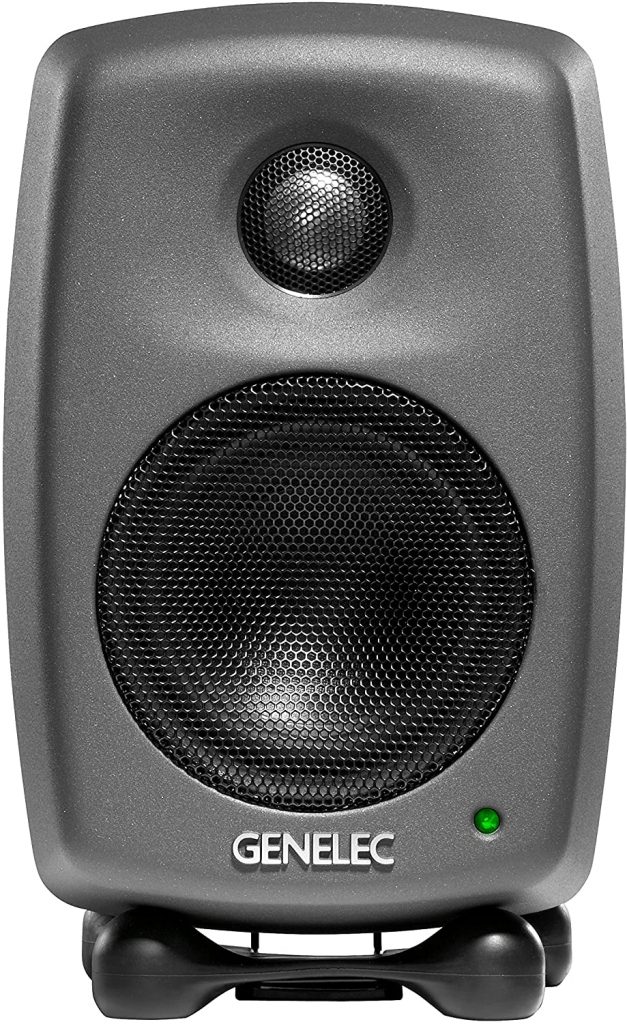
Genelec 8010 Bi-Amplified Monitor is a very effective studio speaker for critical monitoring and mixing. Its neutral sound with no distortion keeps the same sound throughout your control room.
If you are an electronic sound producer then it’s a highly recommended studio monitor for you.
Its tonal balance is identical at low and high volumes and it is free to wall reflections.
The technology behind it provides neutral sound throughout your studio. As well as the power consumption is very low.
Let’s have look at the features of Genelec 8010 Bi-Amplified Monitor
Driver
Genelec 8010A Monitor features a 3-inch low-frequency driver along with a 1/4-inch tweeter dome. Both are powered by separate Class D power amplifiers. This combination provides us with the perfect sound for our projects.
It’s an ideal choice for home studios.
Wattage
It is a 2-way active monitor and hence a built-in amp. This class D amplifier provides us with 50W combined output power. As this monitor is a 2-way monitor the woofer and tweeter receive separate power from the amp.
The power is divided into 25W for the woofer and 25W for the tweeter.
The amp is capable to deliver up to 96 dB of SPL(sound pressure level). The cool thing is that the tonal balance doesn’t change with an increase or decrease in volume.
Near-field or Far-field
Genelec 8010A is a pure near-field studio monitor. You can use this monitor in your home studio without any hassle and get a quality mix with this monitor.
50W is not much power so its performance in bigger acoustically treated rooms would be poor.
Frequency response
Genelac claims that this monitor is capable to deliver 67Hz to 25kHz. The high is good compared to other studio monitors listed here. You can mix high-frequency instruments more precisely than other same range monitors.
I have researched and didn’t get any information about the crossover frequency for this monitor but I think it would be around 2.2 kHz to 2.5kHz.
If its frequency response is between around 2.2kHz to 3kHz then this is a good signal about this monitor as you can mix human vocals easily.
Environment
Genelec 8010A is a pure nearfield monitor so you can use it in small rooms without much acoustic treatment. In near-field monitors, the environment doesn’t affect more on the sound.
Here are some pros and cons of the Focal 2x Alfa 65 monitor.
Pros
- More treble (down to 25Hz)
- Clear and powerful sound (50W)
- Pure nearfield
- Ideal for all music genres
- Tonal Balance doesn’t change in high volume
- Back Bass reflex hole
Cons
- Not much tasted by recordists
- Slight boost at mid-range
- Crossover frequency not known
Genelac is a mid-price range studio monitor and is available at around $600 to $700 pair.
10. Adam Audio A7X (Single)
Adam Audio A7X monitor is an award-winning studio monitor. It is considered one of the most versatile and balanced studio monitors in the market. However, only a single monitor costs you around $1000 but it deserves that price.
You get a ribbon tweeter with this monitor as well as it features 2 fully separate amp systems for the low-frequency drivers and the tweeter.
The low-frequency driver provides a tight bass and the ribbon tweeter gives each and every detail of the mid and high-frequency sounds without tiring your ears.
There are some unique points that make it a legendary studio monitor. Let’s have a look at them.
Driver
The 7″ low-frequency driver is made of Carbon, Rohacell, and Glass Fiber and provides a tight balanced bass down to 42 Hz which is very helpful to mix bass lines of your projects.
The German Handmade Precision X-ART Ribbon Tweeter is a magnetic suspension type tweeter that responds with the subtlest part of frequency and delivers each and every detail of mid and high-frequency sound.
Wattage
It does not have a 2-way amp but it has fully separate amps for the LF driver and HF driver. The Ribbon tweeter is driven by a 50 Watt A/B amplifier and the bass and midrange woofer by a 100 Watt PWM amplifier.
So, you get a perfect and balanced sound from this studio monitor.
The amps are capable to deliver SPL per pair up t0 114dB which is more than all the listed monitors.
Near-field or Far-field
It is a nearfield monitor and ideal for home studio mixing. You can shape your songs without any hassle with this studio monitor.
It has 4 control knobs – Input Sensitivity, High Shelf EQ, Low Shelf EQ, Tweeter Gain. With these controls, you can adjust this monitor with your studio environment and size.
Frequency response
It delivers a frequency response from 42Hz to 50kHz which is the broadest coverage in all studio monitors listed here. The added benefit is the frequency graph is nearly flat and you get the pure original sound without any modification.
Many people get stuck in mixing mid-range items like vocals etc. The crossover frequency 2.5kHz helps you to mix mid-range items without much effort.
The result is you can get your mix with unexceptional quality.
Environment
Adam A7X is equipped with Input Sensitivity, High Shelf EQ, Low Shelf EQ, Tweeter Gain controls which help you to adjust your monitor in any environment.
As it is a nearfield monitor, there is not much effect of the environment in the sound. But you should have at least a semi-sound treated control room.
It has 2 bass-reflex holes which are front-facing so you don’t have to worry about placing it against the wall.
The overall performance of this monitor is very good compared to other monitors in this. It would be the best choice for you if you want a versatile monitor in your studio.
Pros
- Delivers Tight bass (down to 42Hz)
- Clear and powerful sound (150W – 114dB SPL)
- Ribbon Tweeter provides detail mid-high sound
- Flat frequency response
- Front Bass reflex holes
Cons
- High Price
- Not Magnetically Shielded
This studio monitor costs you at least $700 for a single piece.
11. Fluid Audio FPX7
This is the last studio monitor on our list. The best part of this studio monitor is the woofer and tweeter are fitted so it is free of orientation. You can place it in any orientation and it gives the same sound.
It also features a ribbon tweeter which is considered to be the most responsive tweeter of all types. The design is very awesome and modern. It will totally change the look of your studio. You get a fader volume control at the front which looks awesome and handy.
Let’s have a look at the features of Fluid Audio FPX7.
Driver
Fluid Audio FPX 7 has a 7″composite cone LF driver and an AMT ribbon tweeter built together. This technology is called coaxial driver technology and is a very new concept to the audio engineering field.
This coaxial driver is capable to deliver an unaltered and pure sound.
Wattage
It is equipped with a Bi-amplified 140Watt Class A/B amplification amplifier which provides a separate 90w woofer and 50w AMT tweeter.
This precisely designed amp delivers seamless and clear sound and works for hours without heating. Also, the power consumption of this monitor is very low.
Near-field or Far-field
It is a nearfield monitor and adjusts with all types of environments and rooms size. You just have to adjust the acoustic controls provided at the backside of this monitor.
It doesn’t require a professionally soundproofed studio. You can use it in semi-soundproofed rooms without hassle.
Frequency response
This monitor delivers a frequency range from 42 Hz – 27 kHz. The down to 42kHz low-frequency driver provides you with tight and clean bass.
On the other hand, the AMT tweeter is capable to deliver up to 27kHz. And the cool thing is the frequency graph is not nearly flat (+/-3dB). You can have a great mix with this studio monitor.
Environment
The orientation-free design makes it adjust to any environment and placement. As well as it has a front bass reflex which is helpful if you want it to place against a wall.
Due to the front bass reflex system, you get nearly 0% reflection through the behind wall.
Fluid Audio FPX 7 features acoustic adjustment switches which can help you to adjust this monitor to your studio environment.
Overall the performance of this monitor is good and you can think to buy it. But the last choice is yours.
Pros
- Orientation free drivers made together
- Tight bass (down to 42Hz)
- Clear and powerful sound (140W)
- Ribbon AMT Tweeter provides detail mid-high sound
- Flat frequency response (+/-3dB)
- Front Bass reflex holes
- Competitive price
Cons
- New technology not much sold
- Over-emphasized extreme high frequencies
- Mid-range slightly modified
You can get a single Fluid Audio FPX7 monitor at $350 to $400. That means you’ve to spend around $700 to $800 on the pair.
At The End
So, here was the list of Best Studio Monitors Under 1000 dollars. In my eyes, they all are jewels of recording equipment. Now the choice is yours. I have given all the details of those monitors in the post. After reading this article you are now able to choose the best suitable monitor for your studio.
Which monitor are you going to buy? Don’t forget to inform us and our readers. Comment below. It will help our readers to choose the best on the list.
FAQs about Studio Monitors Under 1000
Do I really need 2 studio monitors?
No, you don’t need two studio monitors, but they can help you get a more accurate representation of your mix. If you’re on a budget, however, you may want to start with just one monitor and consider upgrading to a pair later on.
Do I need studio monitors to DJ?
It depends on what kind of DJing you’re doing. If you plan to mix live, then yes, studio monitors are a must-have. However, if you’re just using your studio monitors to listen to music and create mixes, then you may be able to get away with using a standard set of computer speakers or headphones. Ultimately, it’s best to choose a set of studio monitors that suits your needs and budget.
Why are studio monitors not sold in pairs?
There are a few different reasons why studio monitors are typically sold individually rather than in pairs. For one, different mixing and monitoring needs require different types of studio monitors. So, while one type of monitor may be perfect for your needs, it might not be ideal for someone else’s. Additionally, some budget-conscious producers may not be able to afford a pair of studio monitors at one time. By selling them individually, manufacturers are able to accommodate a wider range of customers. Ultimately, whether you buy your studio monitors individually or as a pair depends on your needs and budget.
What is a matched pair of monitors?
A matched pair of studio monitors is a set of two monitors that are designed to have the same sonic characteristics. This helps ensure that your mixes will sound consistent when played back on either monitor. While most studio monitors are sold individually, some manufacturers do sell matched pairs. However, these can be more expensive than buying two individual monitors.
Do I need an amplifier for my studio monitors?
It depends on the type of monitor you have. Active monitors, which are the most common type, have a built-in amplifier and don’t require an external one. Passive monitors, on the other hand, do require an external amplifier. Before buying studio monitors, it’s important to consider your needs and budget in order to choose the right type of monitor for you.
What is the difference between a studio monitor and a regular speaker?
The main difference between a studio monitor and a regular speaker is that studio monitors are designed specifically for use in audio mixing and monitoring. They typically have components that are optimized for accurate audio reproduction, such as high-quality drivers and built-in amplifiers. In comparison, regular speakers are typically designed for general listening or home theater use. As such, they may not offer the same level of audio quality or accuracy as studio monitors.
Read also,

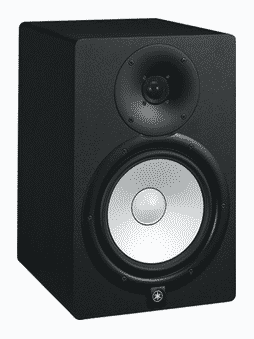
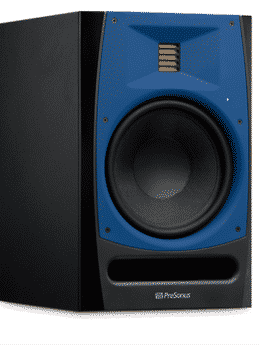
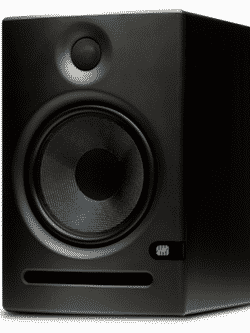
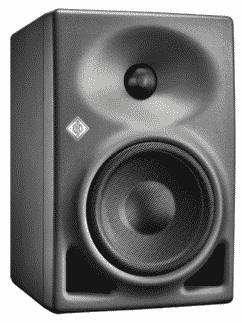
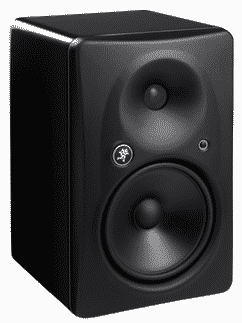
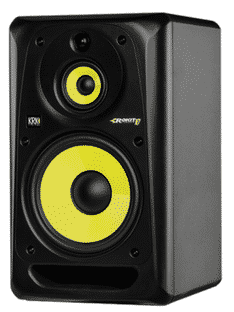
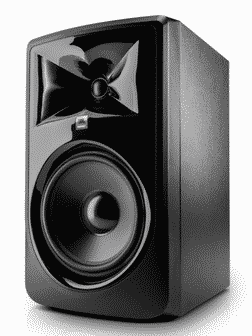
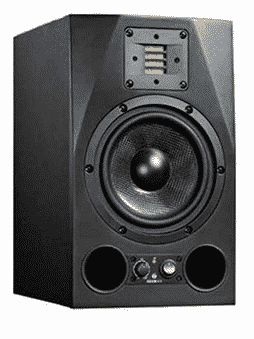
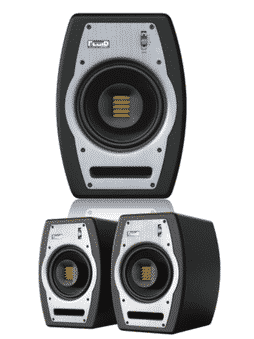
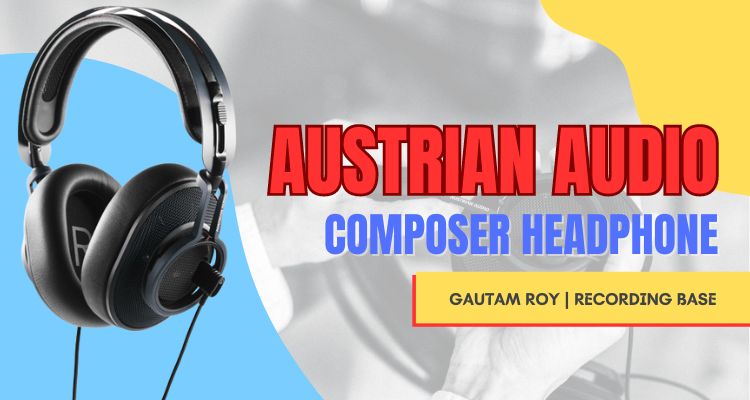
![Heritage Audio i73 PRO Series Audio Interfaces Review [2024]](https://www.recordingbase.com/wp-content/uploads/2024/01/Heritage-Audio-i73-pro-series.jpg)

